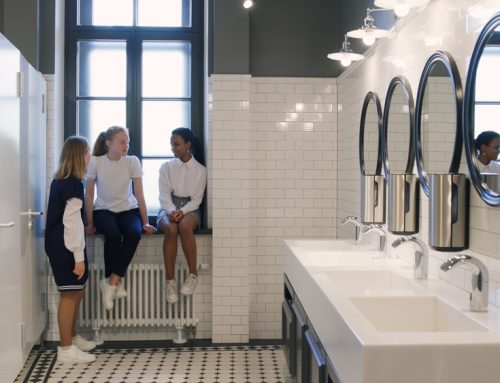We’re all different.
These days, the world recognises this – which can make the binary gender distinctions of male and female toilets appear a little outdated.
In recognition of this, many schools are installing gender-neutral facilities. Great in theory, but do they really work? And even more concerning – strictly speaking, are they legal?!
Here our school washroom experts take a closer look at the laws surrounding mix sex toilets in Wales. Highlighting the benefits – and the drawbacks – alongside how best you can provide modern facilities that work for everyone.
Keep reading to find out more or get in touch to speak with a member of the ONVO team.
What are the rules?
Confusion around the provision of gender-neutral toilets comes because the legislation is slightly different depending on where you are in the UK.
Whilst largely the same, in England, there is some ambiguity and a little more ‘wiggle room’ to interpret guidance.
In Wales, there is no such uncertainty.
For Welsh schools, the Education (School Premises) 1999 regulations still apply, which clearly state:
“Except as provided in regulation 4(3), washrooms for male and female pupils who have attained the age of 8 years shall be separate.”
Yet despite this, a report carried out by Merched Cymru uncovered that 15% of secondary schools in Wales have still made the switch to mixed-sex toilets and are breaking the law by failing to provide single-sex facilities.
Pros and cons of mixed-sex toilets
Aside from being a legal necessity in Wales, there are mixed feelings about the benefits of providing gender-neutral toilets with arguments to both support and oppose the idea. These include:
Cons
- Students feel uncomfortable sharing with the opposite sex
- Toilets used by males are harder to keep clean without urinals
- Females need access to sanitary bins
- Fully enclosed toilets (often used to afford more privacy to users of mixed-sex toilets) can lead to more anti-social behaviour
- Fully enclosed toilets can pose more of a health and safety risk, making it harder to access students in the event of an accident or emergency
Pros
- Embrace a more modern approach
- Demonstrates acceptance and open-mindedness
- Accommodates students who don’t identify as one specific gender
How to make sure you’re following the rules
For Welsh schools the stance is clear – provide gender-specific toilets. But for schools in England, or settings keen to embrace all student needs, the ideal is to offer choice – with gender-specific and gender-neutral toilets.
Whilst this may be the ideal solution, there’s no escaping the limitations faced – principally around space.
Having the room to accommodate additional facilities is invariably in short supply. Still, there are ways you can reconfigure space or adapt even seemingly unworkable or restrictive areas into attractive, user-friendly toilets.
For example, switching old-fashioned, free-standing sinks for a wall-hung wash trough – such as the sleek and slimline design of our Purewash range – is a great way to free up floor space or fit facilities into a tight location.
Similarly, if the only area available for sinks is the middle of the room or jutting out from a wall, we have solutions for this too, with the Latherwash modular island unit.
With bespoke lengths available, our education products can be adapted to meet the restrictions of any setting, providing the freedom, flexibility and choice to improve facilities – for everyone!
Need a hand?
Meeting legal obligations, whilst also providing modern, attractive, user-friendly facilities can be difficult – but it’s by no means impossible.
We firmly believe that every child deserves access to toilets they feel safe and comfortable using – and all ONVO products are designed with this in mind.
Planning changes to your school washrooms? We’d love to help. Contact the team now on 0161 302 5342, email sales@onvo.com or fill in our contact form and we’ll be in touch.





Leave A Comment